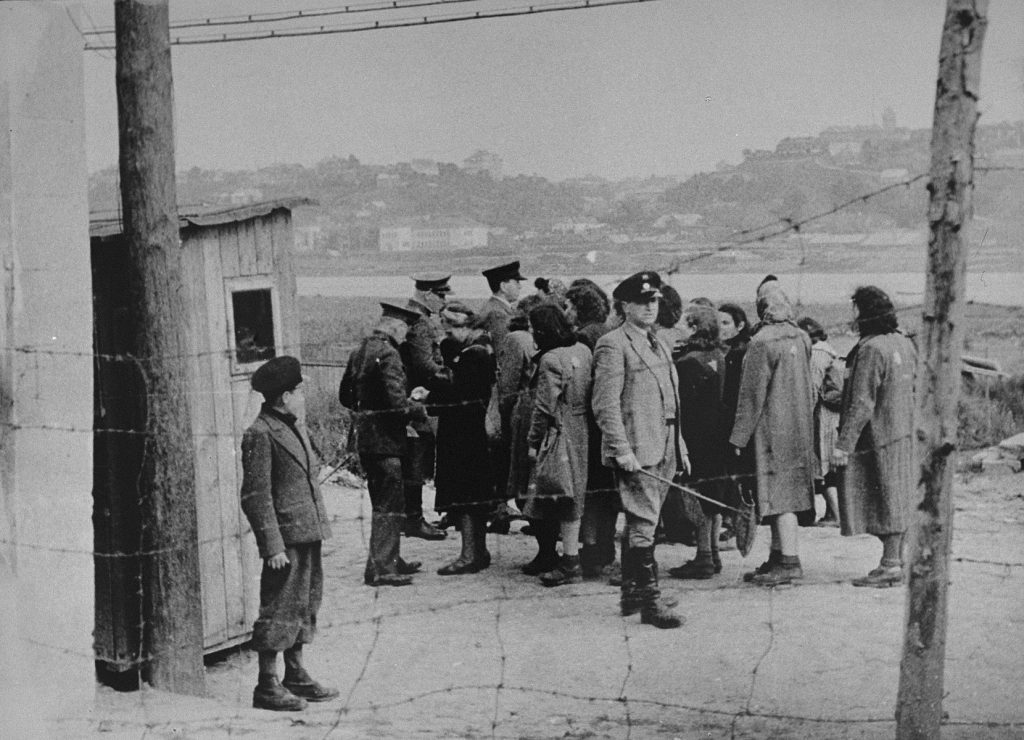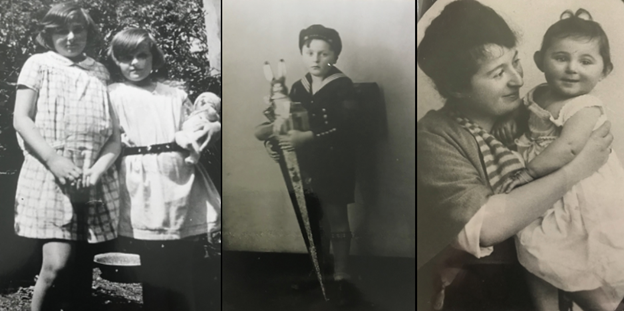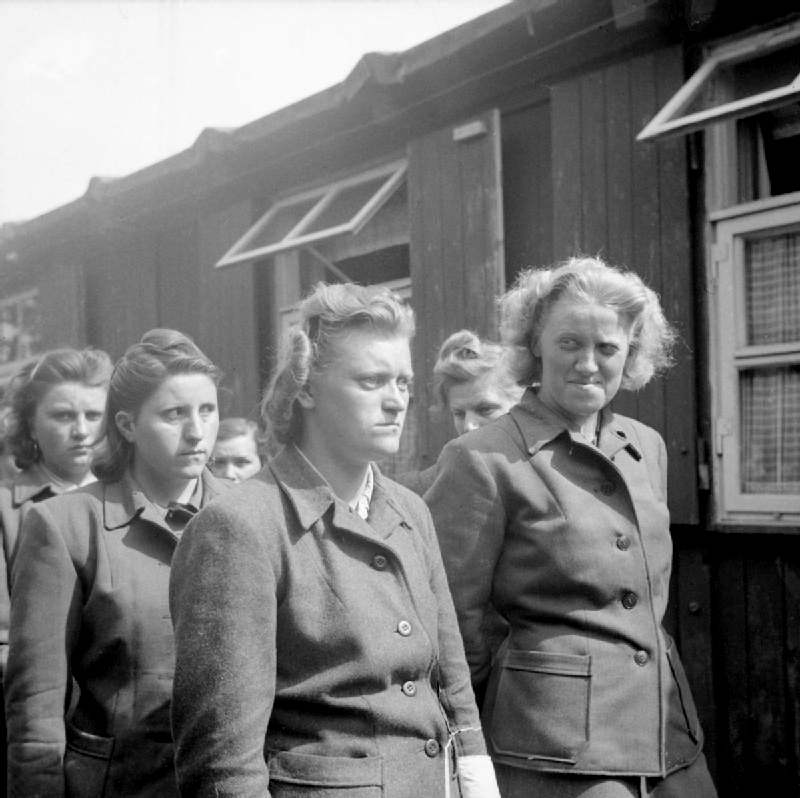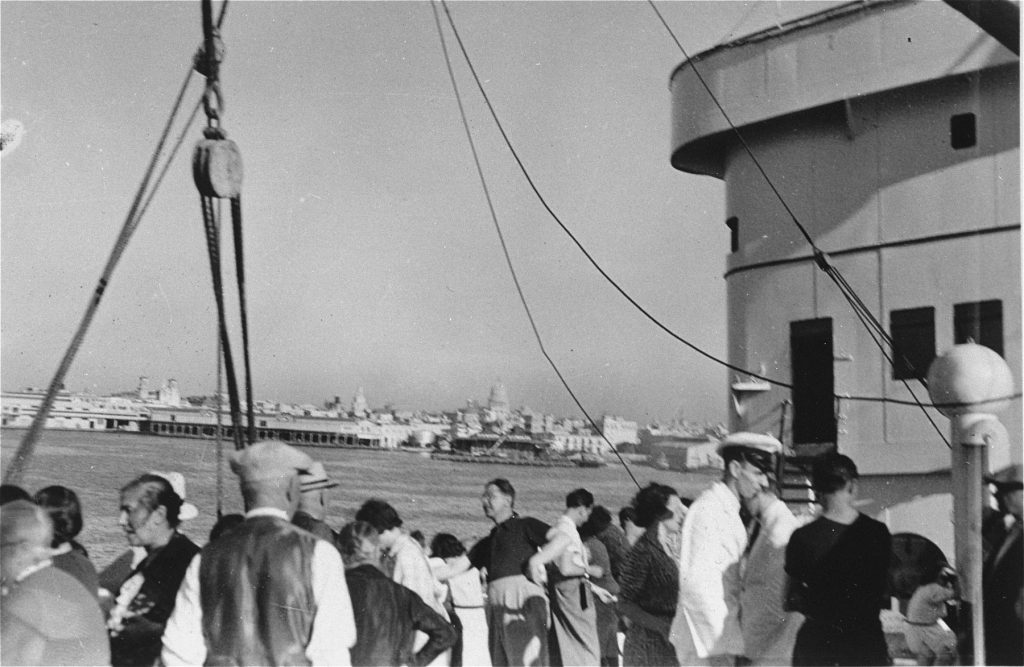Module 2: Gender and Sexuality
1. Why Gender and the Holocaust?

Photographer: George Kadish/Zvi Kadushin. 1941-1944, Kovno Ghetto. #81106. United States Holocaust Memorial Museum
Gender “complicates familiar and outworn categories and humanizes the past in powerful ways. It can also help to answer some persistent questions about the perpetrators, witnesses, and victims of the Shoah. What drove the perpetrators to act as they did? What was the relationship between Jews and their gentile neighbors? How does the integration of Jewish sources challenge master narratives of the Holocaust?” – Doris L. Bergen.
Bergen, Doris L., ‘‘What Do Studies of Women, Gender, and Sexuality Contribute to the Understanding of the Holocaust.’’ In Different Horrors, Same Hell: Gender and the Holocaust, edited by Myrna Goldenberg and Amy Shapiro, 16-37. (Seattle: University of Washington Press, 2012), 16.
Why Gender and the Holocaust?
As you watch this mini-lecture by Dr. Deidre Butler, look for key concepts that are helpful for thinking about gender in historical contexts and note what kinds of questions are being asked by scholars who have contributed to our understanding of the importance of gender for studying the Holocaust.
- SS female camp guards are rallied to clear the dead. Photographer: H. Oakes (Sgt). April 19, 1945, Bergen Belsen. #BU 4065. Imperial War Museum.
- German police and auxiliaries in civilian clothes look on as a group of Jewish women are forced to undress before their execution. #43195. United States Holocaust Memorial Museum.
Assigned Readings
Judith Baumel Schwartz: On the Historiography of Gender in Holocaust studies
In this mini lecture, senior Holocaust historian Dr. Judith Baumel-Schwartz uses the example of Jewish refugees from Germany to illustrate how focusing on gender allows us to understand how Jews experienced the Nazis’ rise to power and how and why some families succeeded in emigrating and surviving through women’s gendered knowledge and networks.
Oral History: Annette Wildgoose
In this clip from her oral history interview, member of the second-generation Annette Wildgoose describes her mother’s experience of being one of the fortunate few who were able to disembark from the MS St. Louis in Southhampton. Consider how this story is gendered in terms of Alice Meister’s own choices and how others responded to her.
Consider Baumel Schwartz’s argument as we hear the story of Annette Wildgoose’s mother, Alice Meister. Her mother was a young woman who was sent away from Germany on the St. Louis. She was supposed to go to Cuba where relatives would meet her. Instead, the St. Louis was turned away from Cuba and a series of other countries. She was fortunate to be one of the few who was allowed to disembark at Southhampton in England.
- Passengers aboard the MS St. Louis in Havana harbor before being turned away. May 27-June 02, 1939, Havana, Cuba. Photographer unknown. Photograph from album owned by Moritz Schoenberger. Photograph number 02983.

Interactive Map
To learn more about Annette Wildgoose and her mother’s survival journey, press on the menu button on the top left of the interactive map below. You will then be able to scroll down and click on the different icons.
This interactive map was created by Nicola Woodhead, a PhD candidate in History at the Parkes Institute at the University of Southampton, UK.
Oral history: Francine Christophe
Continue thinking about the different ways that gender shapes this history and listen to the following video testimony by Francine Christophe, a writer, poet, and Holocaust survivor from France. She recounts her experience as a child in the Bergen-Belsen concentration camp. While you watch Francine tell her story, consider the role that gender plays in her experience. Also reflect on how motherhood, and implicitly sexuality, are also central to this narrative.
Cristophe, Francine. Human, directed by Yann Arthus-Bertrand. (2015, Humankind Production).
Questions for Reflection:
- How would you apply Dr. Judith Baumel Schwartz’s argument about how gender functions in the two Oral Histories presented here?
- Both of these oral histories highlight the relationships between mothers and daughters. How are their memories of their mothers shaped by their experiences as a survivor or member of the second generation?




